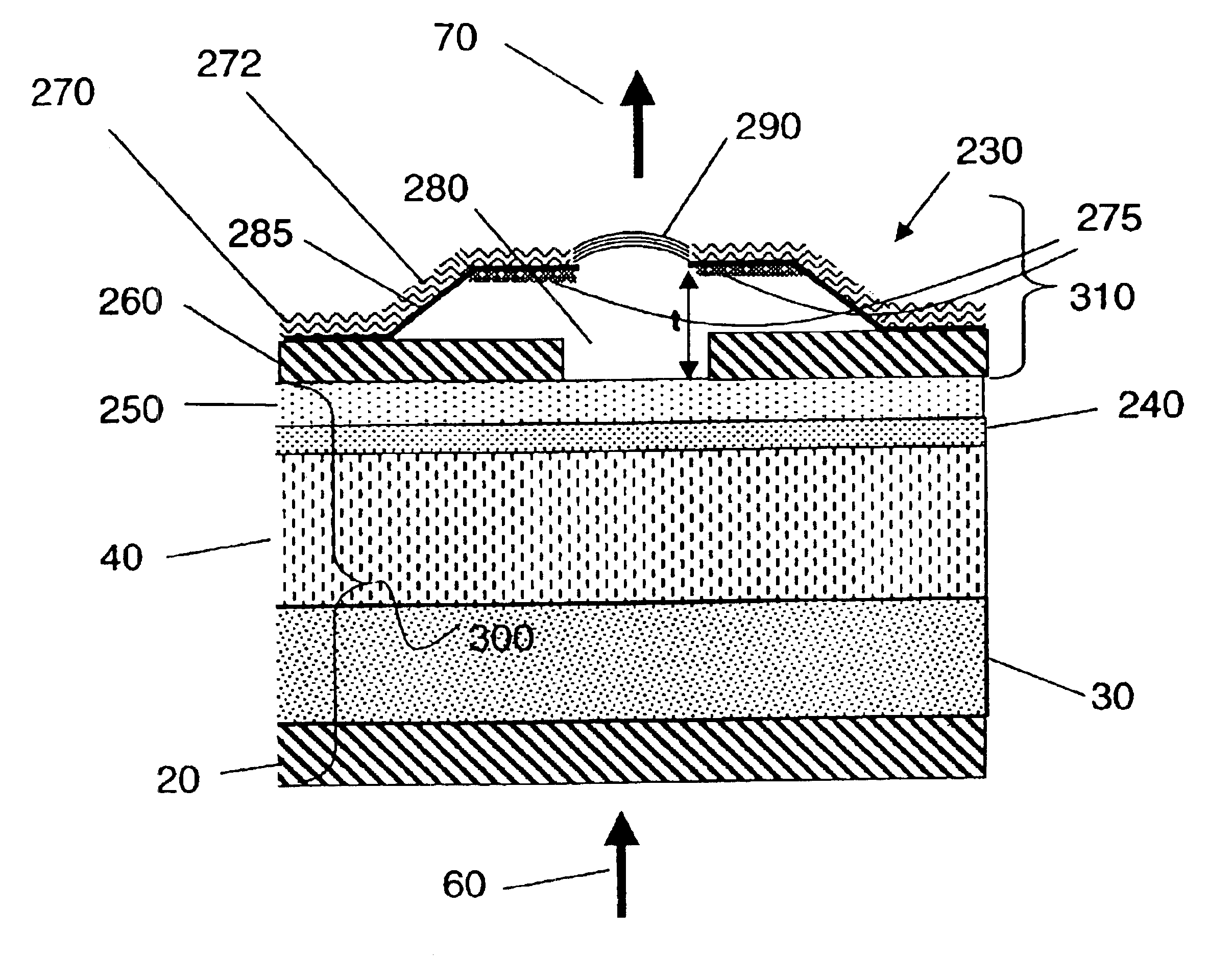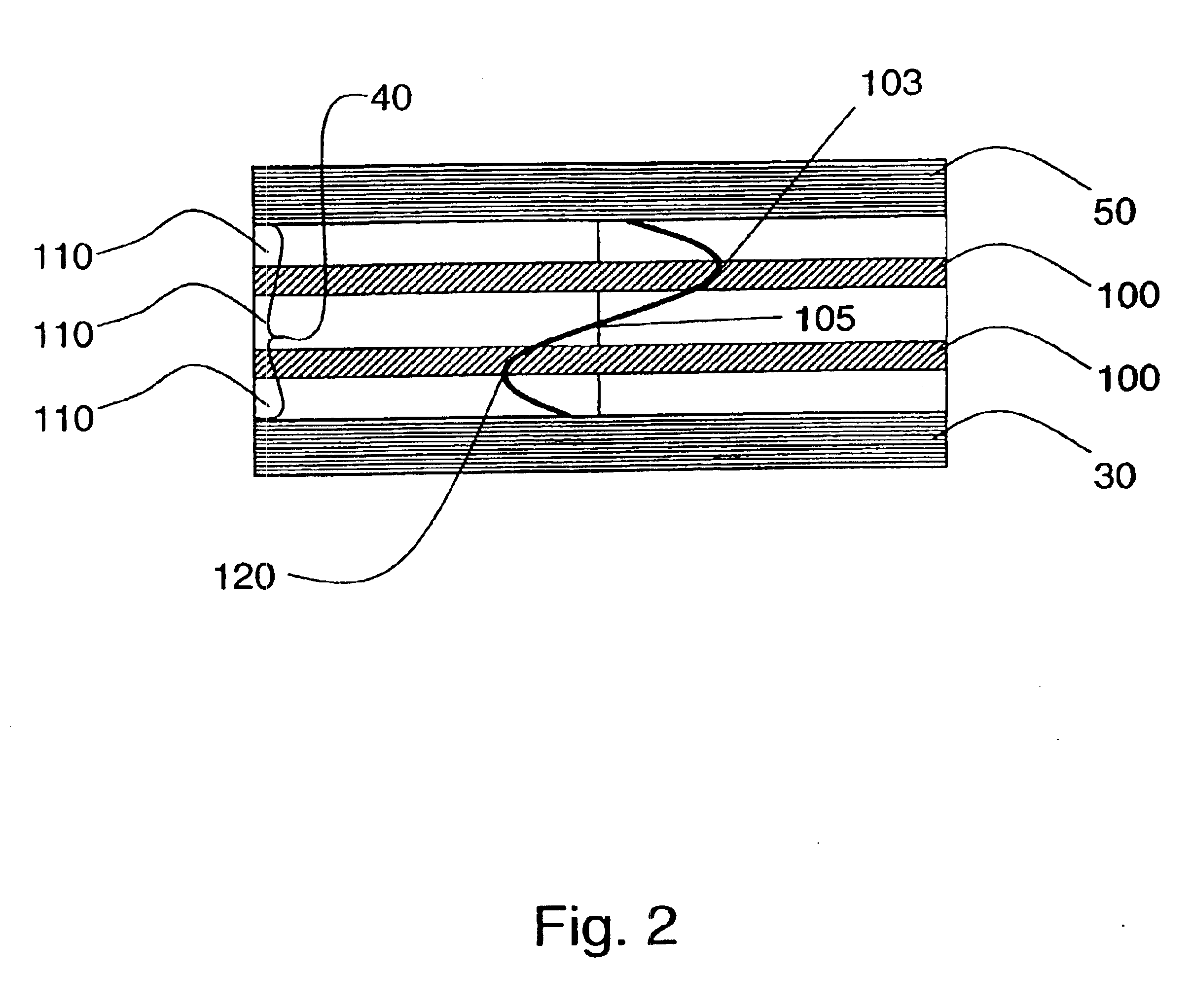Tunable organic VCSEL system
a laser cavity and organic technology, applied in semiconductor lasers, active medium materials, instruments, etc., can solve the problems of increased device life, low carrier mobilities of devices, and low optical and thermal damage thresholds of organic materials
- Summary
- Abstract
- Description
- Claims
- Application Information
AI Technical Summary
Benefits of technology
Problems solved by technology
Method used
Image
Examples
second embodiment
[0076]In a second embodiment, the dielectric control layer 1020 comprises a photorefractive material. Lithium niobate doped with Fe+3 is a candidate material. In this case, the controller 1040 is an optical source, such as a UV lamp, and the refractive index changes in response to the intensity.
third embodiment
[0077]As a third embodiment, the dielectric control layer 1020 comprises a material that is thermally sensitive, and the controller 1040 is a thermal source, such as a resistive heating element. The dielectric control layer can then modify the laser wavelength via thermal expansion and / or by thermally induced changes to the refractive index, i.e. Lopt(Δ T)=Lopt,0+nd c,o∂Ld c∂T+Ld c,o∂nd c∂T,
where ΔT is the variation of the temperature from a steady-state temperature, Lopt,o is the optical cavity length at the steady-state temperature, ndc is the refractive index of the dielectric control layer, and Ldc is the physical thickness of the dielectric control layer.
[0078]In FIG. 18 a MEMs device is included for changing the optical path length of the laser cavity. The MEMs device is placed atop index matching layer or layers 240 and 250. The micro-electromechanical mirror assembly 310 consists of a bottom electrode 260, a support structure 270, a top electrode 275, support ar...
PUM
 Login to View More
Login to View More Abstract
Description
Claims
Application Information
 Login to View More
Login to View More - R&D
- Intellectual Property
- Life Sciences
- Materials
- Tech Scout
- Unparalleled Data Quality
- Higher Quality Content
- 60% Fewer Hallucinations
Browse by: Latest US Patents, China's latest patents, Technical Efficacy Thesaurus, Application Domain, Technology Topic, Popular Technical Reports.
© 2025 PatSnap. All rights reserved.Legal|Privacy policy|Modern Slavery Act Transparency Statement|Sitemap|About US| Contact US: help@patsnap.com



